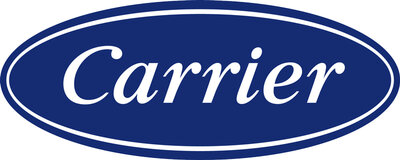Real Estate News

HVAC CONTROL STRATEGIES: Reducing the spread of COVID-19 while optimizing energy consumption
Sponsored News » Sponsored News Edition | By Author | February 26, 2021 4:44 PM ET
 In the wake of the COVID-19 pandemic, building owners and operators are working to understand what steps they can take to reduce disease transmission in the built environment. Many facility managers have already implemented guidelines from the Centers for Disease Control and Prevention (CDC) and government authorities, and strengthened administrative controls such as occupancy planning, social distancing, masks, hand-washing and adequate cleaning.
In the wake of the COVID-19 pandemic, building owners and operators are working to understand what steps they can take to reduce disease transmission in the built environment. Many facility managers have already implemented guidelines from the Centers for Disease Control and Prevention (CDC) and government authorities, and strengthened administrative controls such as occupancy planning, social distancing, masks, hand-washing and adequate cleaning.Enhancing HVAC controls follows logically from these steps. Facility managers adopting guidelines provided by the Epidemic Task Force of the American Society of Heating, Refrigerating and Air-Conditioning Engineers (ASHRAE) can be confident they're putting the welfare of their occupants and employees first.
But they can be nearly as certain that implementing these new recommendations will drive increased energy consumption. Fortunately, prioritizing a building's health does not mean owners must sacrifice their ability to optimize energy use and minimize cost.
Taking Control in the Pandemic
Many HVAC systems support data gathering, reporting, trending and alarming capabilities, which allow managers to track the impact and cost of changes made to improve indoor air quality (IAQ) in near real time. Still, the age and variety of equipment in use presents a challenge, suggesting that no single solution can minimize energy consumption while meeting ASHRAE guidance. Instead, facility managers will want to consider a variety of options to meet this goal.
Optimizing Outdoor Air Ventilation
Optimizing an HVAC system's outdoor air (OA) ventilation is key to a healthier indoor environment. ASHRAE encourages facility managers to increase outdoor air ventilation as much as possible in order to reduce the recirculation air in the space. To do this, facility engineers must factor climate, unit capacity and space requirements for temperature and humidity. Increasing OA is likely to increase the load on any HVAC system and result in a substantial energy penalty.
But there are ways to maximize outside air ventilation while at the same time offsetting as much as possible the associated penalty. It's important to make sure system fans and dampers are properly working, that cooling coils are clean, and that outside air intake and exhaust are free of obstructions. Demand control ventilation systems should be adjusted to maintain minimum ventilation rates at rates equal to or greater than ASHRAE standards, and updated control logic can be added to adjust the economizer to supply outside air at the greatest rate possible.
Building operators may need to consider enhanced freeze protection and/or heating capacity to handle the increased outdoor air, and additional humidification equipment and controls may need to be added. Other steps - such as placing continuously unoccupied areas of the building into setback, adjusting space temperature setpoints outside typical comfort conditions, and utilizing supply air temperature reset to promote greater zone damper openings - also may be helpful. Along with these strategies, facility managers should maximize the use of their building automation systems' energy-saving features.
More Control Options
Other control system options can contribute to a healthier building environment:
- Air Flushing. Before or after scheduled occupancy, ASHRAE recommends that facility managers initiate a purge cycle "sufficient to reduce the concentration of infectious airborne particles by 95%." (See "Coronavirus (COVID-19) Response Resources from ASHRAE and Others") For a well-maintained space, this would require three changes of building volume using outside air, or a flush period of about four hours.
- Nighttime Free Cooling. Nighttime free cooling supplements or replaces a purge cycle by pre-cooling a space with outside air.
- Zone Occupancy Strategies. When buildings are partially occupied, HVAC systems can be set to create a temporary but continuous unoccupied mode. This may allow more outside air to be available to occupied zones while ensuring optimal indoor air quality in occupied areas and reducing energy consumption.
- Filtration. Building owners and operators should consider upgrading to higher MERV-rated filters consistent with ASHRAE guidance and their individual systems' capabilities. Upgrades may require adjustments to fan speeds, airflow setpoints and differential pressure switches, more frequent filter replacement and the possible addition of a filter status switch if one isn't present.
- Humidity. ASHRAE's current research indicates that maintaining relative humidity between 40% and 60% may be beneficial, but results are inconclusive. (See "Coronavirus (COVID-19) Response Resources from ASHRAE and Others") In all cases, indoor humidity levels should be monitored to avoid condensation and mold, and facility managers should stay informed as new recommendations evolve.
- Remote Recommissioning. Recommissioning an older or idle HVAC system is likely to require on-site equipment inspection, but remote recommissioning may be an effective and affordable option in situations where equipment is new, has been inactive for a short time and has sophisticated control features.
- Remote Airside Management. Remote Airside Management leverages a building's automation system to provide a safe and comfortable environment with minimal intervention by local engineers. A centralized team of data scientists, engineers and analysts may be able to assess IAQ, filters, equipment, sensors and the control system's operational health. The team can schedule required services for exhaust and ventilation equipment through planned assessments, remote diagnostics and remote resolutions.
- IAQ Sensor Alarms. Sensors can measure temperature, relative humidity, carbon dioxide, volatile compounds, filter status and occupancy, and can alert building operators to take corrective action when needed.
Healthier Buildings, Healthier Businesses
 As you consider your options moving forward, it's important to keep in mind that every building is different. The controls strategies and solutions you employ to help protect health and minimize energy usage should be unique to your building and situation. As a world leader in healthy buildings, Carrier has experts who can provide you with guidance, support and solutions.
As you consider your options moving forward, it's important to keep in mind that every building is different. The controls strategies and solutions you employ to help protect health and minimize energy usage should be unique to your building and situation. As a world leader in healthy buildings, Carrier has experts who can provide you with guidance, support and solutions.Through an industry-leading suite of advanced solutions and services, Carrier's Healthy Buildings Program helps deliver healthy, safe, efficient and productive indoor environments at a time they're needed most. From building assessments and monitoring to solutions designed to improve IAQ, Carrier's experts will work closely with you to assess, upgrade, maintain and sustain your buildings.
Learn more about the Carrier Healthy Buildings Program and connect with your local expert today.







